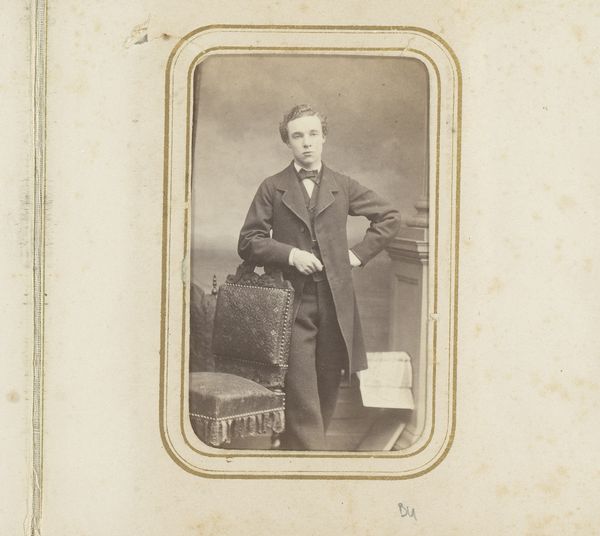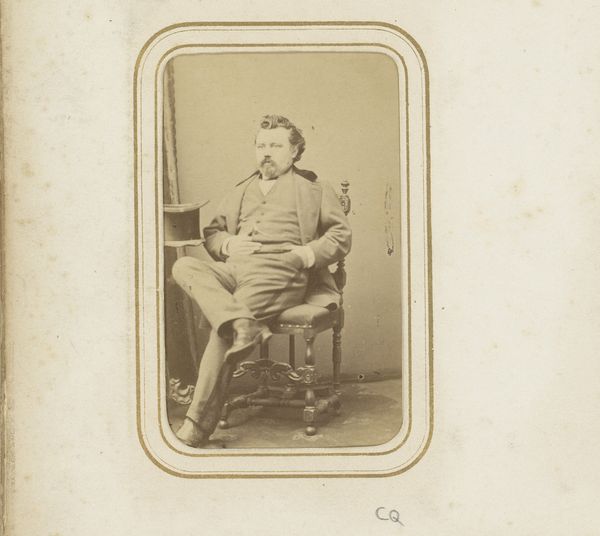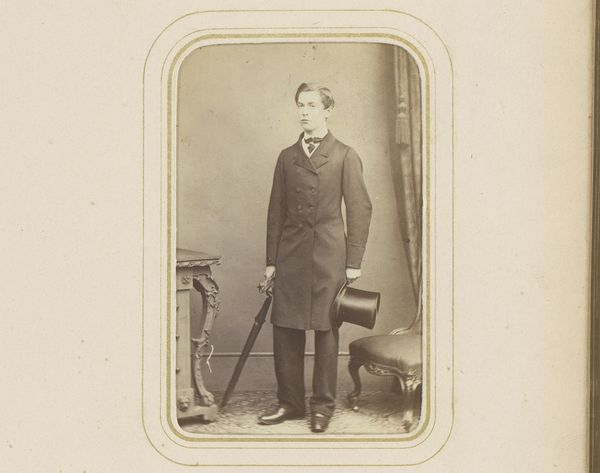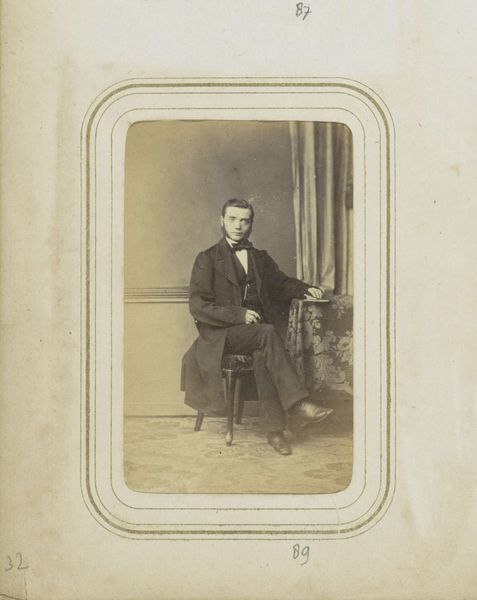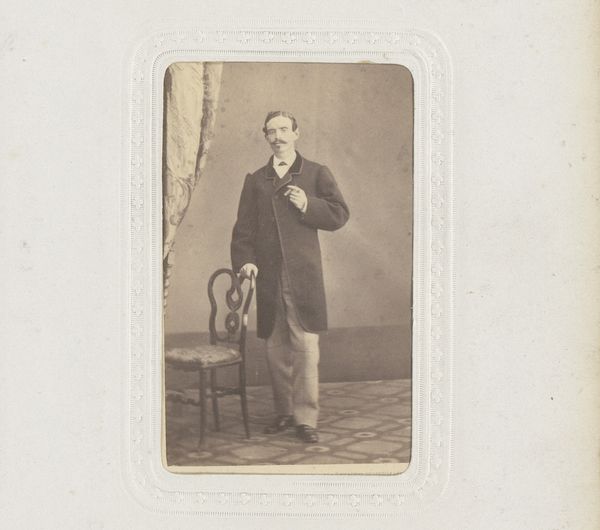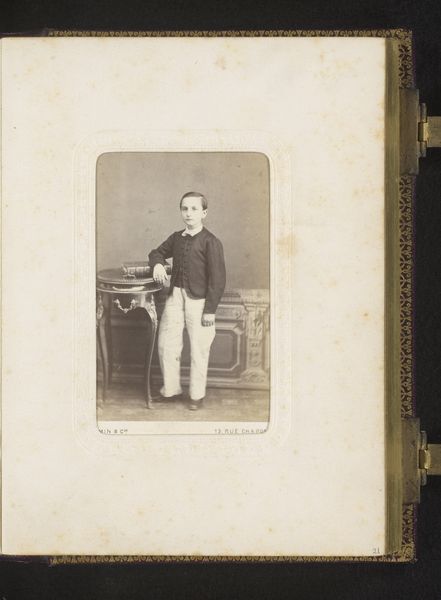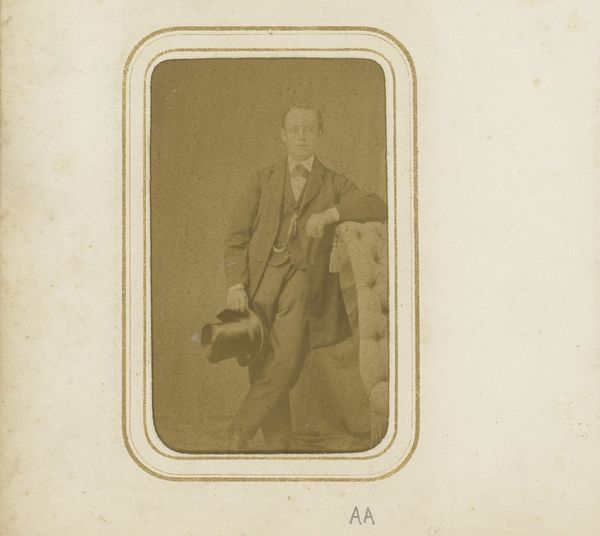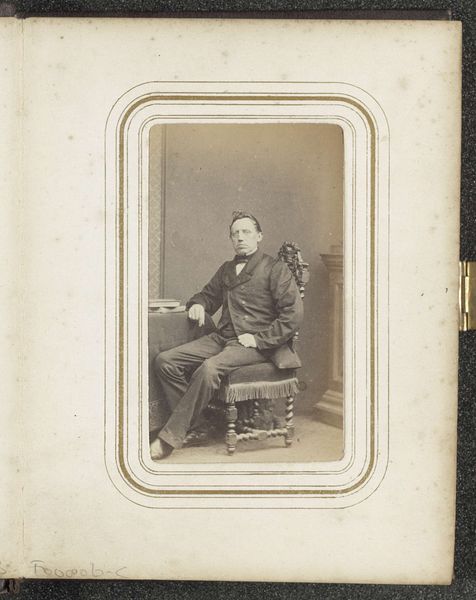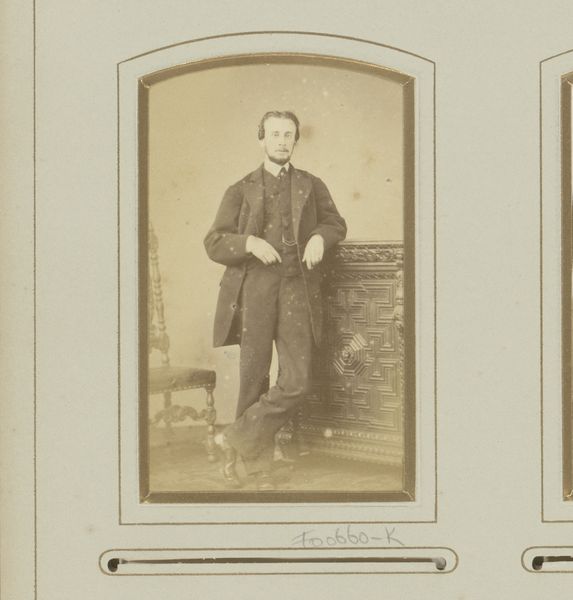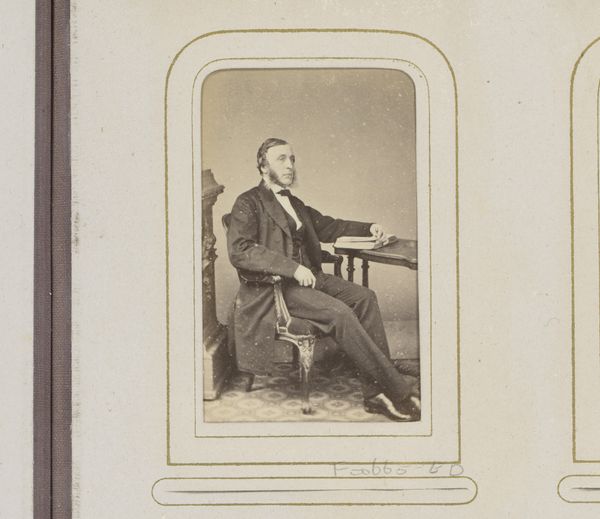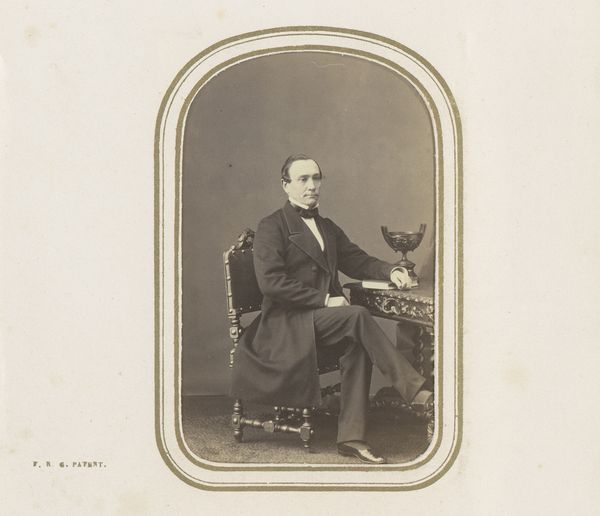
photography, gelatin-silver-print
#
portrait
#
photography
#
historical photography
#
gelatin-silver-print
#
19th century
#
realism
Dimensions: height 84 mm, width 51 mm
Copyright: Rijks Museum: Open Domain
Curator: I'm immediately struck by the somber quality of this image, this man looks very serious! Editor: This is "Portret van een man aan een bureau" (Portrait of a man at a desk), a gelatin silver print attributed to J. & L. Allgeyer, created sometime between 1870 and 1890. The textures achieved with the gelatin-silver process are quite interesting, though I want to emphasize the social dynamics at play during this era. Curator: I find the way the light falls across his face compelling; observe how it sculpts his features. The soft gradations of tone lend a real three-dimensionality to the two-dimensional print. Semiotically, this could signify... a strong, reliable man in charge. Editor: Right, but let’s consider the economics of photography at the time. Portrait studios like J. & L. Allgeyer were increasingly common, offering affordable access to portraiture for a rising middle class. What statement were they trying to convey about themselves with these kinds of photographs? The carpet, the desk: all signifiers of a level of respectability available to a growing segment of society. Curator: And speaking of that desk: structurally, it acts as an anchor, doesn't it? The intricate detailing draws the eye and balances the composition. And he’s holding some sort of document… Notice how that rectangular form mimics the overall shape of the photograph itself, a clever structural rhyme! Editor: Exactly! That “clever rhyme” highlights the controlled image that the sitter – perhaps aided by the photographer – wished to project. Photography’s increasing affordability shaped not just art, but also how people presented themselves to the world. The production and consumption of these portraits became a crucial element of Victorian social mobility. Curator: I’m more interested in what it symbolizes, this photo. The stark, high-contrast effect amplifies the sitter's strong presence. One can read an air of confident intellect from his expression; a certain nobility too! It’s powerful. Editor: Yes, "powerful," but power as manufactured and consumed by the emergent middle class through technological advancement. So while I admire the light and shadow play, what truly engages me is photography’s profound effect on shaping identity and influencing social norms. Curator: Well said! It seems the very fabric of "high art" had just changed and given everyone access to see themselves in its image, or an idealized version of it! Editor: Indeed; the act of image-making, its consumption, and impact on 19th-century identity certainly makes this portrait far richer in meaning.
Comments
No comments
Be the first to comment and join the conversation on the ultimate creative platform.
